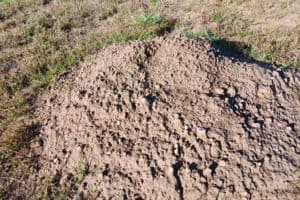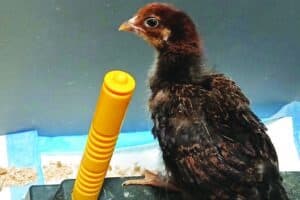At the 2022 Consumer Electronics Show in Las Vegas last month, John Deere unveiled a fully autonomous tractor. Just take it out to the field, configure it for autonomous operation and let it work while you tend to other tasks. The farmer can monitor the tractor’s activity from a mobile device.”With the autonomous 8R Tractor in tillage, farmers are instantly two times more productive because they can do two jobs at once ó focusing their attention on more critical, time-sensitive work,” according to a fact sheet.The tractor is expected to be available later this year. But farming technology has already come much further than probably many of us realize. “Auto-steer systems, which use GPS receivers to keep rows straight and avoid gaps or overlap, are available for equipment ranging from tractors to harvest combines to sprayers with 100-foot-wide booms,” as reported by The New York Times in an article on high tech in agriculture. “Precision seeders and fertilizer systems can be satellite guided to accuracy of an inch or less.”My wife, meanwhile, marvels at videos from @IowaDairyFarmer on TikTok. There, Dan Venteicher shares his adventures on his 180-cow, tech-infused dairy in northwest Iowa; his operation includes robotic milkers and an autonomous feeding system that regularly delivers fresh feed to his cows.With all that in mind, I thought about what else the future might hold that could make life here at Radford Ranch a bit easier. Here are my flights of fancy, some of them not far from reality.
- Tired of cleaning stalls and horse pens? The Roomba i67 Equine Pooper Scooper ñ- from the same company that brought you the robot vacuum ñ- can handle the job for you. Much larger than the regular Roomba, it can traverse nearly any terrain and has a robot shovel-type hand that picks up the poop and deposits it in the Roomba. The Roomba then travels to a designated site to dump the waste. The robot arm even has a heating element to remove manure that is frozen to the ground on bitter winter days.
- We have an excellent farrier who comes by at regular intervals to tend to our horses’ hooves. He doesn’t do goats, though, so that’s a DIY effort that involves catching the goats, holding them down despite their amazing strength and trimming their hoofs with old-fashioned shears. With the Hoof Boss E-Z All-1 Trim System, all you have to do is have your goat or horse insert a hoof and the machine handles the rest, trimming the hoof to programmed specifications. It’s sort of a high-tech version of a hands-free, electric shoe polisher. (This is one that’s not too much of a stretch. On the internet I found The Easy GL 2018 GO, a “professional machine based on the Dutch trimming system.” It’s the “machine of the future” from an Italy-based company. The cow steps into the Easy GL machine, is secured and then lifted on its side, with its feet locked in. Then it’s just a matter of the farrier or whoever comfortably standing and using an electric trimmer to handle the hooves.)
- Ever wonder what your bees are up to during the day? How far do they wander in search of pollen? There already are “bee cams” that offer a live view inside a beehive. Now GoPro has come up with a miniature camera that attaches to a bee and offers either live or downloadable video. See life through a bee’s eyes! It comes with a GPS so you can track your bees precisely. (Admittedly, attaching the camera to the bee is not the easiest of tasks.)
- We’ve thought of getting guinea fowl to ease or eradicate our grasshopper problem in the summer; guinea fowl are known to be relentless in hunting down grasshoppers and other pests. We never took the plunge, though; among other reasons, neighbors expressed concern about how noisy they can be. So we should get the Acme X-1 Robot Guinea Fowl. They also are persistent hunters (at least until their power supply needs recharging). You can program them specifically to hunt down grasshoppers. They don’t make a meal out of them; instead, they zap them with a laser. And unlike real guinea fowl, they’re quiet, though they can be programmed to squawk.
- Solar-powered chicken waterer: Our barn has electricity, but our chickens are on another part of the property; to provide heated water bowls in the winter requires dragging 100-foot extension cords from the house to the chickens. One based on solar power would eliminate that step. If you search “solar heated chicken waterer” on Amazon, you’ll find plenty of listings, but none are actually solar powered. There are some YouTube videos from people more inventive than me showing how to set up a system. And there are commercially made solar chicken coop lights. If we wanted our chickens to not shut down egg production in the winter, we could rig one up (some even come with timers) to provide an extra hour or two of light before sunrise or after sunset ñ- without the inconvenience of having to stretch another extension cord across the lawn.






